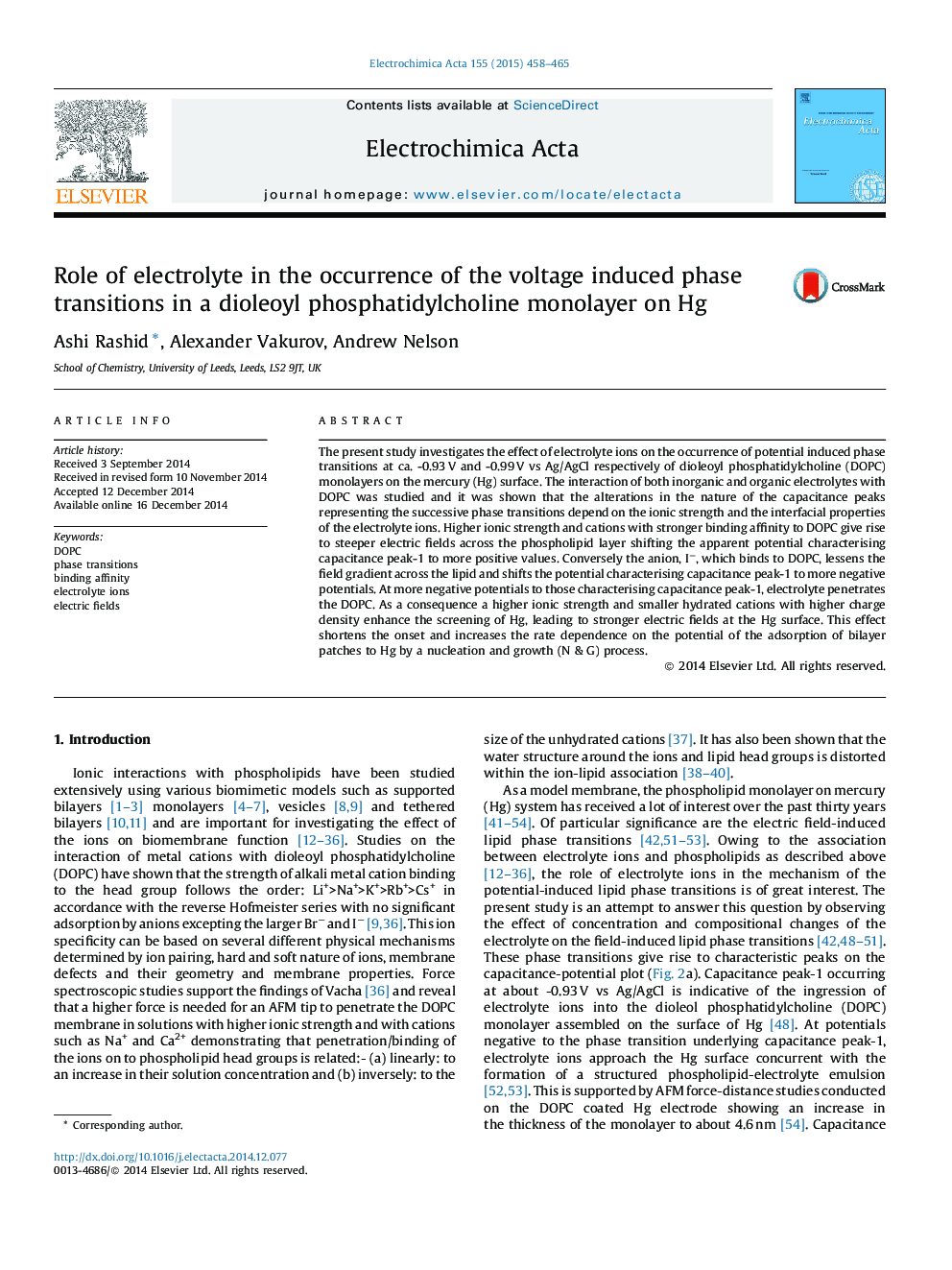| Article ID | Journal | Published Year | Pages | File Type |
|---|---|---|---|---|
| 184598 | Electrochimica Acta | 2015 | 8 Pages |
The present study investigates the effect of electrolyte ions on the occurrence of potential induced phase transitions at ca. -0.93 V and -0.99 V vs Ag/AgCl respectively of dioleoyl phosphatidylcholine (DOPC) monolayers on the mercury (Hg) surface. The interaction of both inorganic and organic electrolytes with DOPC was studied and it was shown that the alterations in the nature of the capacitance peaks representing the successive phase transitions depend on the ionic strength and the interfacial properties of the electrolyte ions. Higher ionic strength and cations with stronger binding affinity to DOPC give rise to steeper electric fields across the phospholipid layer shifting the apparent potential characterising capacitance peak-1 to more positive values. Conversely the anion, I−, which binds to DOPC, lessens the field gradient across the lipid and shifts the potential characterising capacitance peak-1 to more negative potentials. At more negative potentials to those characterising capacitance peak-1, electrolyte penetrates the DOPC. As a consequence a higher ionic strength and smaller hydrated cations with higher charge density enhance the screening of Hg, leading to stronger electric fields at the Hg surface. This effect shortens the onset and increases the rate dependence on the potential of the adsorption of bilayer patches to Hg by a nucleation and growth (N & G) process.
Graphical abstractFigure optionsDownload full-size imageDownload as PowerPoint slide
